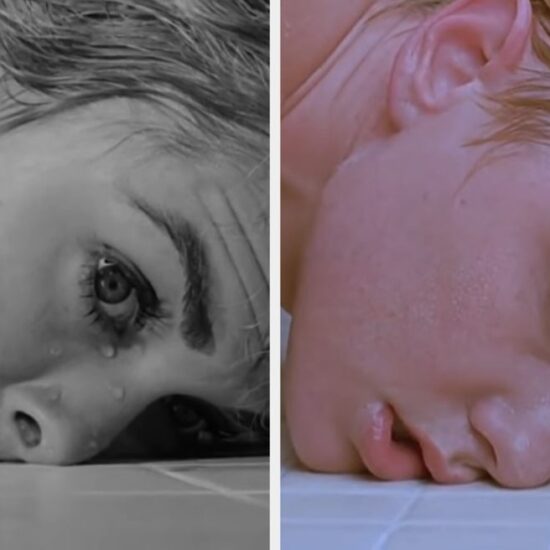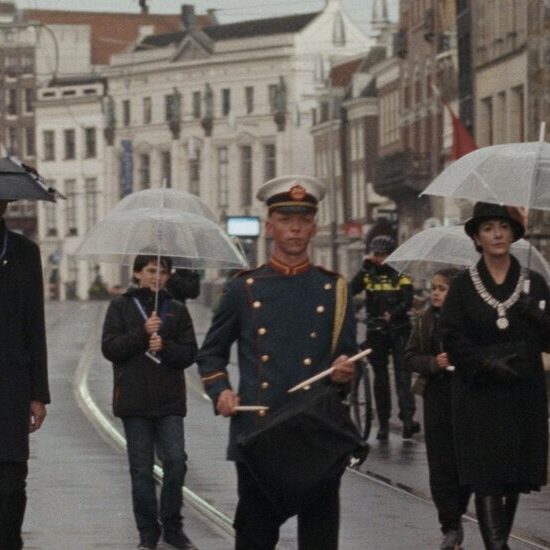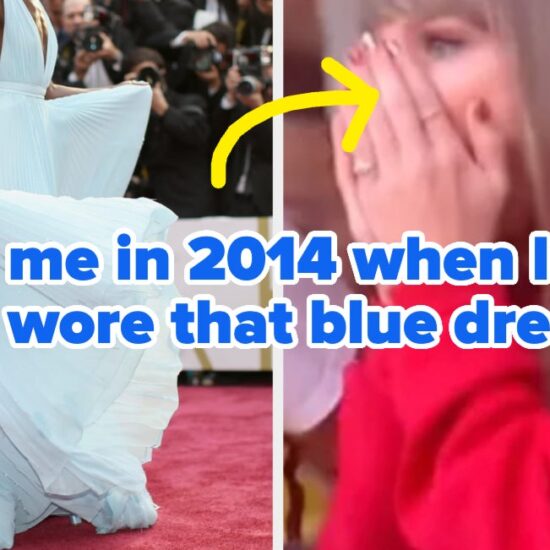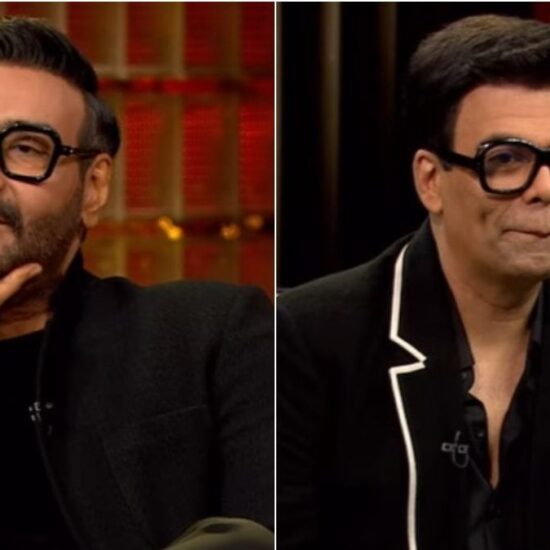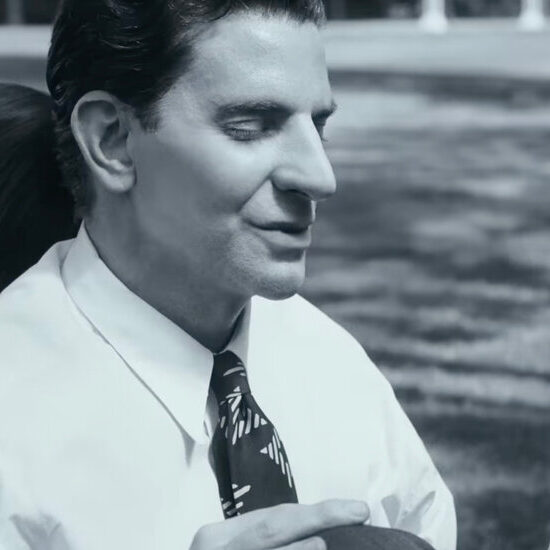
In the late 1990s, Stewart Thorndike found herself working as a model in London. Also in town was Stanley Kubrick, making what would turn out to be his last film, “Eyes Wide Shut.” A fan of the director, Thorndike, then in her early 20s, desperately wanted to be on that set in whatever way possible. She ended up being cast as Nuala (“N-U-A-L-A”), one of the women flirting with Tom Cruise’s character at the Christmas party that kicks off the movie. Fortunately, Kubrick’s idiosyncratic process meant she had plenty of time to observe him at work.
“Most of it he would just figure out what he wanted to shoot that day, so you’d get all dressed up and then he’d be like, ‘I’m going to shoot something else,’ ” she said. “So you just got to watch, and it was honestly the best.”
By the end, she had learned an important lesson: “I got out of it that I didn’t want to be an actor,” Thorndike said. “I wanted to be Kubrick.”
A quarter of a century later, her second feature as a director, “Bad Things,” is premiering on the horror streaming platform Shudder. It is about a woman, Ruthie (Gayle Rankin, from the series “Kindred” and “GLOW”), who inherits a hotel from her grandmother and decides to spend a weekend in the deserted premises, partner and buddies in tow, in the middle of a snowy winter. As fantasy and reality get increasingly mixed up at a property that has seen its share of, well, bad things over the decades, Ruthie’s fragile psyche starts to fray.
If this reminds you a bit of “The Shining” — just as Thorndike’s previous film, “Lyle” (2014), suggested a riff on “Rosemary’s Baby” — it is both deliberate and not.
“I can’t shy away from the fact that my films are borrowing or running alongside or mirroring other films, but it’s never the starting point,” said the director, who had traveled from her Philadelphia home for a chat in Manhattan’s West Village. Thorndike explained that she’s compelled to take what she described as male stories and “force them into my female, queer perspective. You take something you love and take the boys out of it and let us do that stuff, a little,” she added. “Let us explore what it’s like to not be the perfect family member.”
Unlike Kubrick, though, Thorndike did not have the budget to film endless takes, and special effects had to be limited. A gory scene involving Rankin, for example, could only be done once. “So I really, really, really, really went for it,” the actress said in a video conversation before the actors’ strike. “I’m not necessarily a Method actor, but it was extremely difficult to get myself back from that.”
A dedicated cinephile, Thorndike credits David Cronenberg’s “Dead Ringers” (1988) as an early key influence and has taught film at universities like Syracuse and Cornell (“Bad Things” was shot in Ithaca, N.Y.). She was more than happy to share her extensive knowledge with her cast and crew. She showed them “Alien,” for example, and gave her lead actress references that included “Fierce Attachments,” Vivian Gornick’s memoir about her relationship with her mother, and Andrzej Zulawski’s operatically bonkers, hallucinatory movie “Possession” (1981), which Rankin now lists as a new favorite.
Part of the reason she signed on to play Ruthie is that she had been impressed by Thorndike’s debut, involving a lesbian couple in brownstone Brooklyn. “What got me about ‘Lyle’ was a really unique perspective on how to tell a story, not only in the genre of horror, but there was something about the pace of that film that really hooked me, and it felt very feminine,” she said.
In the role of a red-clad hospitality expert — who may or may not be something more — Molly Ringwald was similarly swayed by the thought that “Bad Things” could offer a different perspective on horror. It’s a genre that does not feature much in her filmography, though she did appear in the artist Cindy Sherman’s single directorial effort, “Office Killer” (1997), a wicked satire about a copy editor on a murder spree. “Pretty much the reason why I did that was because it was Cindy Sherman,” Ringwald said in a prestrike video conversation. “Seeing what she would do and how she would see it — it wasn’t like doing a straight-up slasher movie.”
She said she felt the same way about “Bad Things”: “It wasn’t just going to be a straight-up horror movie.”
Still, the film does have spooky hallways and freaky apparitions (or are they?). And what was it that Chekhov said about chain saws? Or maybe it was Tobe Hooper. In any case, the one that pops up in “Bad Things” early on will, indeed, get revved up.
“I wanted to take back the boys’ phallic chain saw from other films,” Thorndike said. “I wanted that loudness and that exaggeration and that brutality to express this power of motherhood that is at the core of the film. On top of that, the chain saw was originally a gynecological tool, and that has another layer for me of connecting to motherhood and brutality.”
That thorny subject also figured in “Lyle,” and while it takes a few beats to emerge in “Bad Things,” it eventually fills the screen, and Ruthie’s head.
“I’ve always been compelled to write stories about motherhood,” said Thorndike, who has a 5-year-old. “‘Lyle’ was very much about wanting to have a baby and wondering if you could be a good mom, and this one is more about the celebration of motherhood — ‘celebration’ is maybe not the right word, but the epic thing that motherhood is, and how it can be toxic sometimes.” (The director is not done with the matter: A third movie, “Daughter,” will conclude her de facto trilogy.)
Placing those stories in a horror context allows the cathartic expression of complicated feelings, many of them not remotely nice or stereotypically maternal. When Ruthie turns, you can see why Rankin would have a tough time shaking her off.
“Why do I have rage in my film?” Thorndike said. “Because I feel rage, and part of that rage is being told how I should behave, probably.” She laughed. “I’m mad that I’m told that I have to be quiet. So part of the rage in the film could be explained as wanting to hear women roar.”








